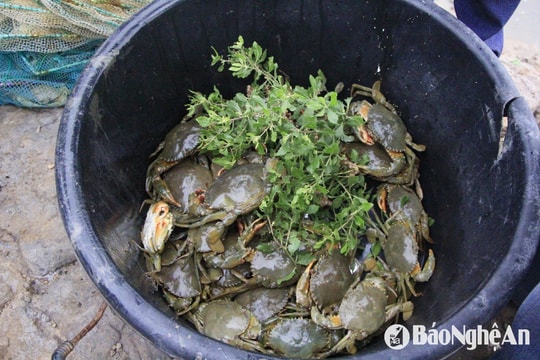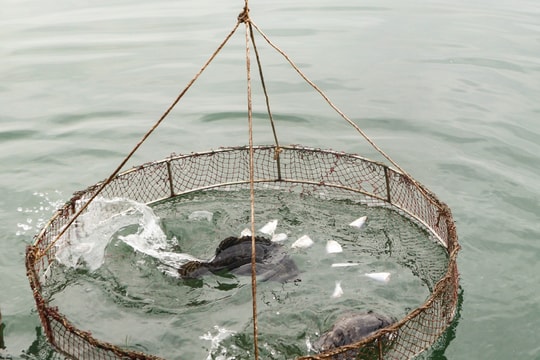5 early signs of disease in farmed shrimp
(Baonghean.vn) - Daily monitoring of shrimp health and understanding the signs of shrimp disease is quite important, in order to detect and prevent diseases early and effectively for farmers.
Below are experiences in recognizing signs of shrimp disease during daily observation.
1. Abnormal signs
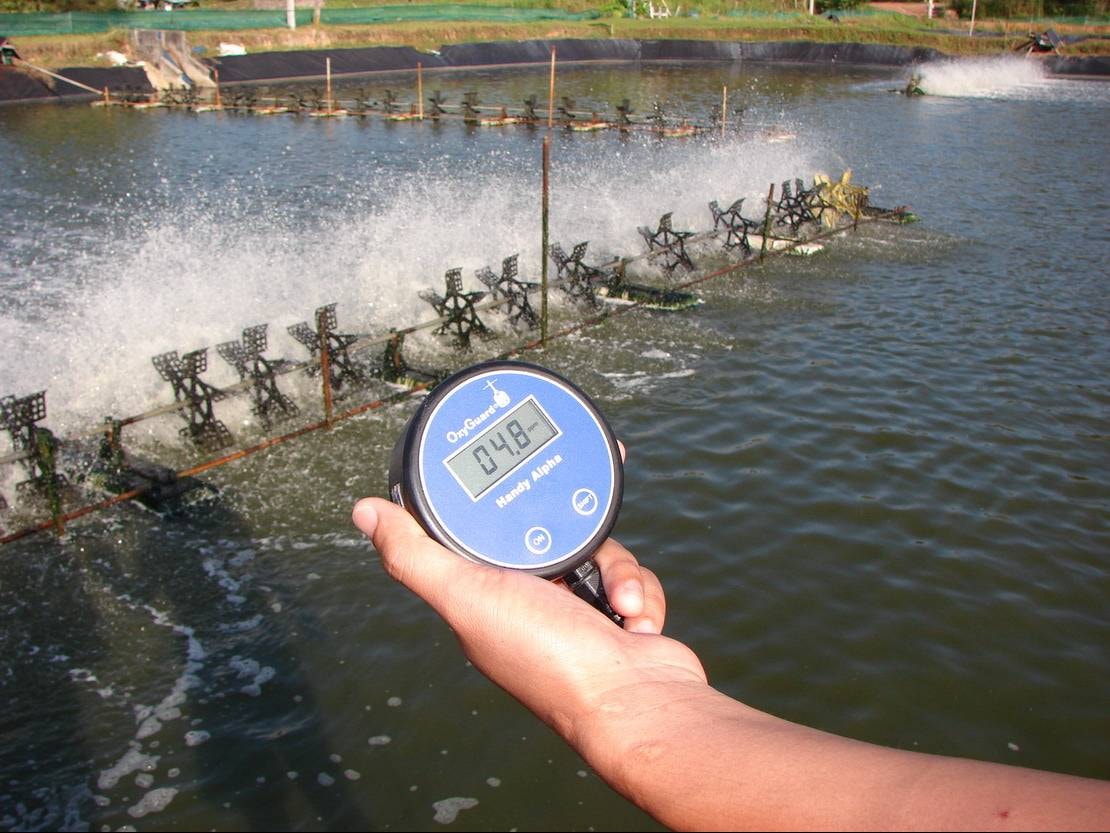 |
To manage shrimp health well, it is necessary to observe the signs in the pond. If you see shrimps gathering at the edge, floating their heads, or birds catching prey, these are signs that the shrimp pond is lacking oxygen, the water quality is poor, or the shrimp are infected.
If the oxygen content and environmental indicators such as toxic gases and pH are still within the allowable limits, shrimp samples should be taken to check for the presence of dangerous diseases.
2. Leftover food
 |
Feeding capacity is one of the important factors to assess the health of farmed shrimp. If the amount of food left over during the day is too much, it is one of the first signs that the shrimp in the pond are infected with disease. However, the phenomenon of shrimp not eating can be due to many different factors such as: environmental changes, shrimp stress...
In any case, it is necessary to adjust the amount of food appropriately to avoid excess food polluting the environment. Through the feeding tray, it is possible to assess the condition of the feces. If the shrimp feces are long and not broken, the shrimp are growing and developing well.
3. Observe appearance
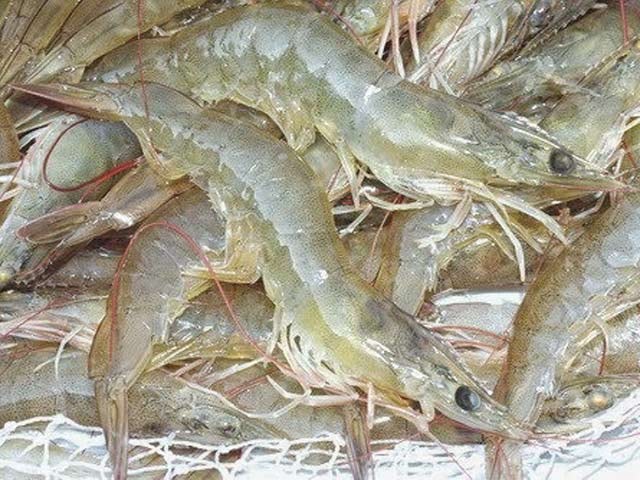 |
Signs of disease in shrimp can be accurately identified through physical characteristics. If the shrimp's body color and gills change color, the shrimp's body is curved, its muscles are cloudy, its shell is soft (outside the molting stage), and blisters are some of the typical signs of infected shrimp.
4. Shrimp intestines
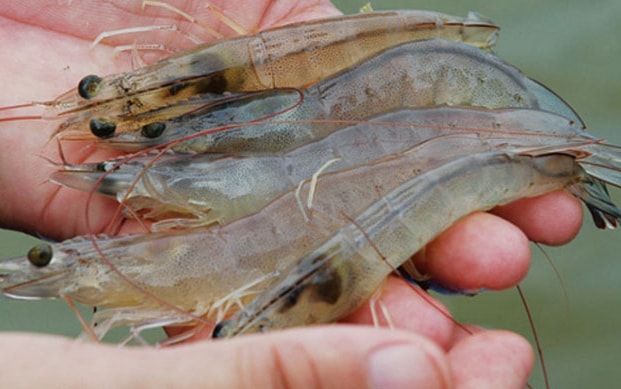 |
Through the amount of food in the shrimp intestines to assess the health status of farmed shrimp. If the intestines are full of food, it shows that the shrimp are growing well; if the intestines are short or broken, it shows that the shrimp in the pond are showing signs of infection or the amount of food is not enough to meet the shrimp's needs.
The color of the intestines also assesses the health of farmed shrimp. Normally, healthy shrimp, good digestion of food, intestines are light yellow or bright yellow; if the intestines are red or pink, it shows that there are sick shrimp in the pond; if the intestines are pale or opaque, the shrimp's intestines are empty, there is no food, which shows that the shrimp are sick, and it is necessary to find the cause of the disease.
5. Shrimp blood clotting time
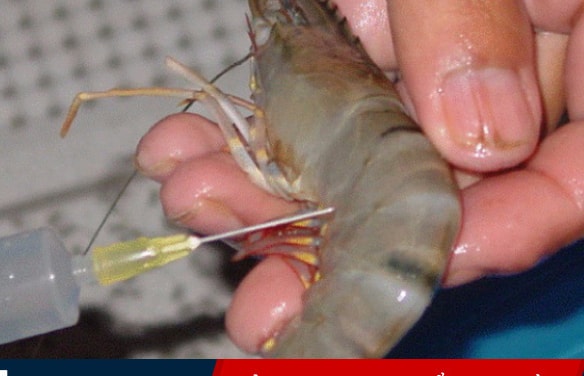 |
The presence of bacteria in shrimp blood is measured by shrimp clotting time. To test the clotting time, take a few drops of shrimp blood with a syringe and spread it on a glass slide then calculate the shrimp clotting time.
For healthy shrimp, blood clotting time is about 10 - 30 seconds; if blood clotting time is more than 30 seconds, the shrimp's body may be infected with bacteria.
* Signs of disease diagnosis in farmed shrimp
1. External signs of the body:
- Shrimp turns slightly blue (possibly due to MBV infection)
- Red body or appendages (red body disease caused by GAV virus and secondary infection with other viruses or bacteria)
- Soft shrimp shell (soft shell disease)
- Shrimp shells are slightly green and slimy (possibly due to Protozoa parasite infection)
- Shrimp body has opaque white muscle color (cotton disease)
- The inside of the head is slightly yellow and has a foul odor when peeled off (yellow head virus disease)
- Shell has white spots (white spot virus, or IHHNV virus or bacteria)
- Black spots on the shell (bacterial disease).
2. Internal signs:
- Black or brown gills (black gill disease)
- Gills have fungal filaments (fungal disease)
- Gills have a slightly green color (infection with Protozoa parasites)
- Empty intestines, no food (Vibrio infection)

